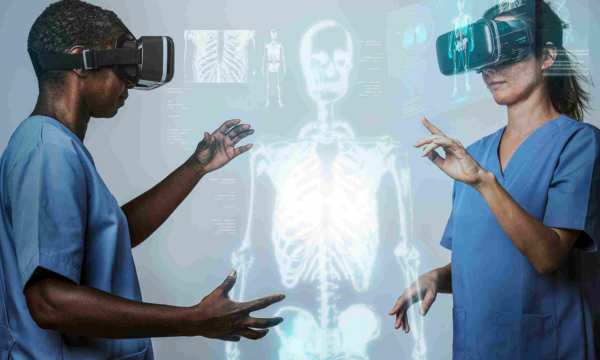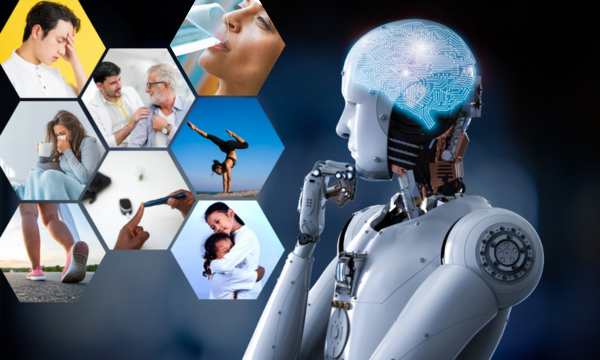Sleep monitoring can explain why you may wake up tired even after long hours in bed.
Ad
Artificial intelligence is changing the field by turning the quiet signals of the night into clear, privacy-conscious insights.
From wearables to contact-free sensors, AI-driven sleep monitoring highlights patterns, flags potential issues, and suggests gentle adjustments that fit real life.
As these tools mature, they are becoming more reliable, more comfortable, and easier to integrate into everyday routines without adding complexity.

The Evolution of AI in Healthcare
AI entered healthcare through pattern recognition in medical images and decision support, then expanded into continuous monitoring.
In sleep monitoring, the shift from sporadic lab studies to consumer-friendly sensing unlocked richer, longitudinal datasets. Edge computing and secure cloud analytics now work together, making it possible to analyze nights of data quickly and responsibly.
This evolution allows insights to move beyond generic averages toward nuanced, personal baselines that respect variability across seasons, travel, and daily habits.
Recent innovations show steady progress from research to practical solutions. In 2024, Philips introduced a contact-free sleep monitoring system that uses AI for real-time analysis, with plans for enhanced cloud connectivity in 2025.
ResMed launched a non-invasive device focused on respiratory parameters in 2024 and aims to incorporate machine learning to help predict sleep apnea events in 2025.
Researchers also demonstrated washable, skin-compatible smart garments with deep learning-enabled sensors that monitor sleep comfortably and reliably.
How AI Analyzes Your Sleep Patterns
Modern AI sleep monitoring systems combine signals such as movement, heart rate, breathing rate, oxygen trends, and environmental factors like noise and temperature.
Algorithms transform raw streams into features, then compare them against your personal baseline instead of one-size-fits-all thresholds. Deep learning models identify transitions between sleep stages, estimate sleep regularity, and flag anomalies that deserve a second look.
On-device processing can reduce latency and keep sensitive audio off the cloud, while encrypted syncing enables broader trend analysis when you opt in.
Beyond stages and totals, advanced approaches model circadian rhythms, recovery load, and nightly variability. They look for patterns like rising heart rate and micro-awakenings that hint at stress or an overly warm room.
They also track consistency of bedtime and wake time across weeks, because regularity often predicts how refreshed you feel.
When signals disagree, ensemble methods weigh reliability, reducing the chance that a single sensor drift leads to confusing insights in your sleep monitoring app.

Sleep-monitoring-through-apps-and-watches-(Source-Google)
AI-Powered Sleep Monitoring Tools
There is no one best device, only the best fit for your goals and comfort. Options include wrist wearables, finger rings, bed or bedside sensors, and even contact-free radar solutions.
In 2024 and 2025, major brands expanded AI in mainstream devices, such as Samsung Galaxy Ring and Galaxy Watch series, which deliver sleep monitoring analysis alongside daytime wellness insights.
Meanwhile, contact-free platforms aim to reduce friction entirely, analyzing breathing and movement without requiring anything to be worn.
Match the sleep monitoring tool to your lifestyle: if you dislike wearing devices, try a contact-free sensor; if you travel often, choose a compact wearable that holds charge for several days.
How AI Can Detect Sleep Disorders
AI sleep monitoring can highlight patterns associated with common sleep issues, offering timely nudges to seek professional evaluation when needed.
Companies are pursuing clear regulatory pathways as features expand; for instance, several vendors seek clearances for algorithms that assist in identifying sleep apnea risk, with ResMed planning predictive capabilities for apnea events in 2025.
These insights are not diagnoses, but they can encourage early conversations with clinicians.
To keep alerts meaningful, robust systems use confidence scoring, cross-check multiple signals, and ask for user confirmation when possible.
This reduces false alarms and helps preserve trust. When a pattern persists, apps can provide educational explanations and options to export summaries for healthcare visits.
Regions like Asia-Pacific, which held a significant revenue share in sleep monitoring devices in 2023 and is expected to grow rapidly through 2034, are seeing strong adoption driven by awareness and technology availability.
AI Suggests Improvements for Your Sleep
The most helpful systems translate analytics into small, sustainable actions. They track your baseline and then suggest micro-habits such as shifting bedtime by fifteen minutes, easing late caffeine, or adding a pre-sleep wind-down.
Environmental tuning matters too: smart thermostats can lower temperature during your deepest sleep window, while AI-driven lighting can gently dim in the evening and brighten in the morning to reinforce a healthier rhythm.
Rather than a long list of rules, sleep monitoring guidance arrives as timely nudges that respect your schedule.
Personalization strengthens over time. If your data show that late exercise disrupts rest, recommendations adjust, while if earlier workouts improve deep sleep, the system suggests repeating that pattern.
Some platforms translate nightly data into scores such as sleep efficiency or regularity, then explain why the score changed with clear cause-and-effect notes.
This feedback loop builds understanding and motivation without judgment, helping you prioritize the few changes that provide the largest benefit.
Better rest begins when insights become gentle, consistent habits you can actually keep.

A-peaceful-nights-sleep-(Source-Google)
Integrating AI with Digital Sleep Therapies
Digital therapeutics for insomnia, including programs based on cognitive behavioral principles, pair naturally with AI monitoring. When you opt in, nightly sleep monitoring data can personalize session timing, surface relevant lessons, and track adherence more precisely.
Over weeks, the system highlights improvements in regularity and wake-time stability, offering encouraging milestones.
Some products also support care pathways by allowing data sharing with clinicians, using standardized summaries that fit into existing workflows and privacy requirements.
Market signals suggest continued momentum. Analysts project that AI-powered sleep optimization solutions could reach substantial global value by 2034, supported by a near thirty percent compound annual growth rate.
Adjacent categories such as AI smart sleep masks are also expanding, with expected market growth through 2034.
Together with ongoing research into washable smart garments and the mainstreaming of contact-free sensors, the ecosystem is moving toward more comfortable, more personalized, and more accessible sleep support for many households.
Conclusion
Sleep monitoring is not a magic fix, but it is a powerful guide that turns scattered signals into understandable stories about your nights.
By choosing the right tool, letting it learn your baseline, and embracing a few targeted changes, you can move toward steadier energy and a calmer bedtime routine.
As the technology advances and integrations deepen, expect sleep support to feel more natural, less intrusive, and more helpful day after day.
Start tonight by picking one small improvement and building from there.


